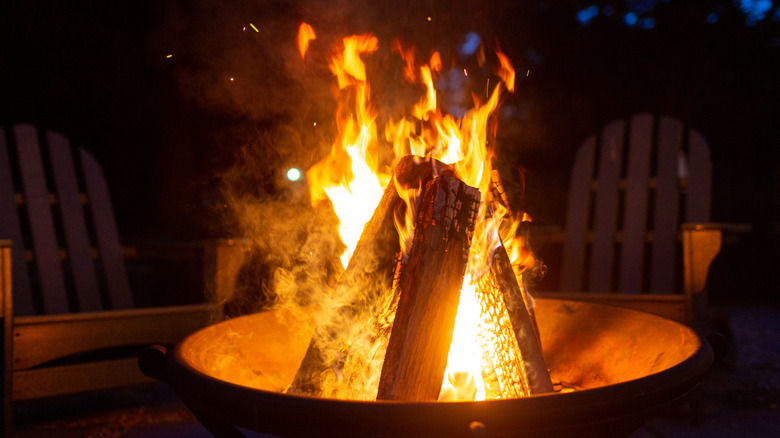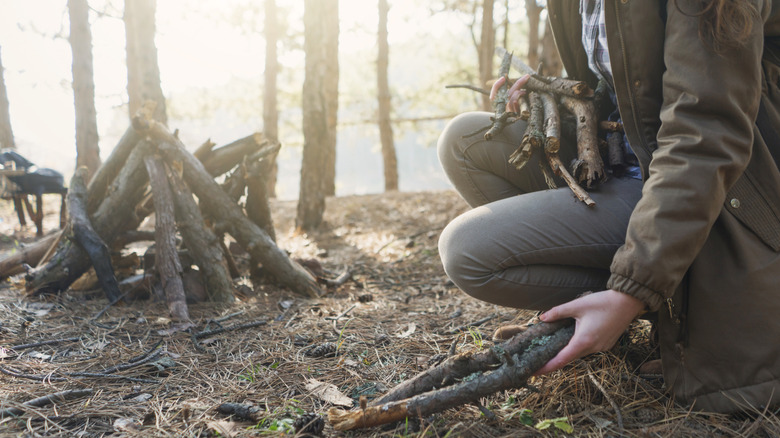Natural Materials You Should And Shouldn't Use For Kindling In Your Outdoor Fire Dish
Sweaters are out of storage, pumpkin spice is on the menu (though this year it's sharing space with apple crisp), and it's time to dust off the fire dish or pit. If you don't have one, fire pits are a great way to turn your outdoor space into a cozy oasis that extends well beyond summer.
If you've ever tried to start a fire, you know it's not quite as simple as lighting a match. Fires require three main components: tinder, kindling, and fuel. Tinder will be highly flammable material like newspaper or dry leaves. Generally, kindling is small (and very dry) sticks or twigs, and fuel is larger logs that you "feed" to the fire to keep it going. In addition to the above, there are plenty of natural materials you can find outside that will work as tinder and kindling. These are especially useful if you find yourself camping and there aren't many small sticks around.
Pine cones, which have a variety of uses, are a good place to start. However, like all fire-starting materials, they do need to be completely dry to be effective. Other forageable options include pine needles, cattails, and even moss. If you want to take it a step further and embrace the idea of zero waste, there are several natural household items that will help you get a fire going, including citrus peel (added benefit: it smells good), nutshells, and dryer lint, which is highly flammable and can be saved in old toilet paper rolls.
What materials to avoid
While it might seem like you can add pretty much anything to a fire to keep it going, there are several items you should avoid. Steer clear of fire accelerants like gasoline, kerosene, or barbecue lighter fluid, which can cause your fire to quickly get out of control. Some types of wood, including hemlock and many pines and firs, are known to crackle and pop — fun sounds, yes, but the result is flying, flaming embers, so don't burn your old Christmas tree. Additionally, don't be tempted to use your fire as a place to dispose of trash, especially plastics, metals, and glass.
One of the most important parts of having a fire, especially one that is open, like a campfire, is putting it out correctly. It is not safe to simply go to bed and let it burn out, and it goes without saying, never leave a fire unattended. Give the fire sufficient time to die down before you put it out. Make sure you have several gallons of water on hand to put out your fire. After you initially pour water over it, wait several minutes and then pour more water on any spots that are still smoldering. You will know the fire is completely out when there are no more glowing embers.

